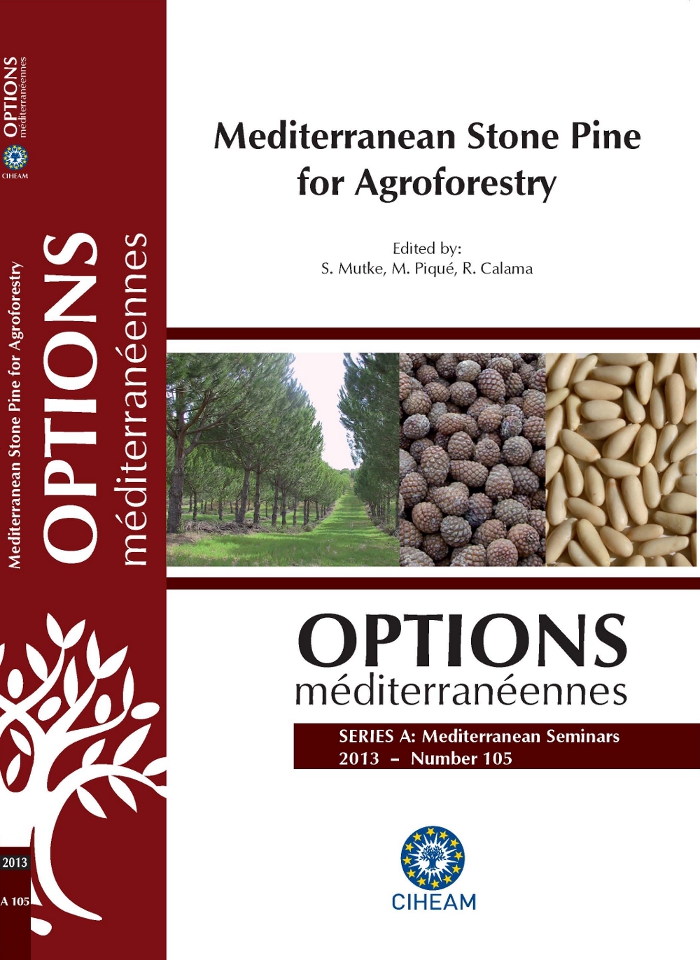
OM A105
Mediterranean stone pine for agroforestry
- [ Afficher ]
- [ Télécharger ]
- [ Exporter la citation ]
Vous pouvez télécharger la citation au format :
- [ Imprimer ]
Résumé
The pine nut, the edible kernel of the Mediterranean stone pine, Pinus pinea, is one of the world’s most expensive nuts. Although well known and planted since antiquity, pine nuts are still collected mainly from natural forests in the Mediterranean countries, and only recently has the crop taken the first steps to domestication as an attractive alternative on rainfed farmland in Mediterranean climate areas, with plantations yielding more pine nuts than the natural forests and contributing to rural development and employment of local communities. The species performs well on poor soils and needs little husbandry, it is affected by few pests or diseases and withstands adverse climatic conditions such as drought and extreme or late frosts. It is light-demanding and hence has potential as a crop in agro forestry systems in Mediterranean climate zones around the world. This publication contains 14 of the contributions presented at the AGROPINE 2011 Meeting, held from 17 to 19 November 2011 in Valladolid (Spain). The Meeting aimed at bringing together the main research groups and potential users in order to gather the current knowledge on Mediterranean stone pine as a nut crop and to analyse its potential and current challenges. The presentations and debates were structured into two scientific sessions dealing with management of stone pine for cone production and on genetic improvement, selection and breeding of this species, and was closed by a round -table discussion on the challenges and opportunities of the pine nut industry and markets. Thirty nine scientists, and forest and industry managers, coming from Lebanon, Portugal, Spain, Tunisia and Turkey participated in the meeting, which will hopefully be the first of a series of meetings and activities of the newly restored FAO-CIHEAM Sub-network on Mediterranean Stone Pine.



